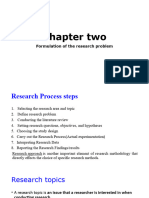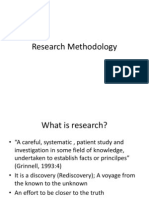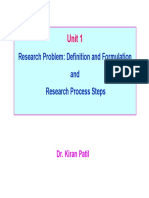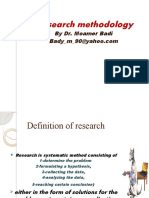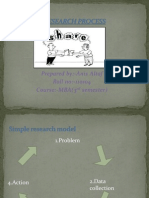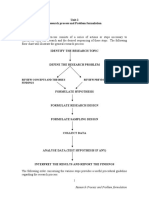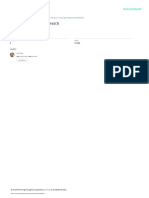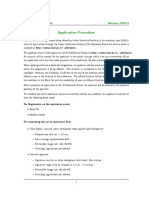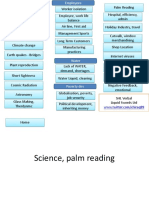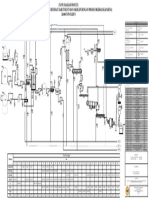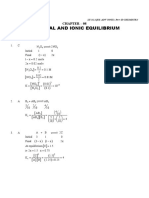0% found this document useful (0 votes)
60 views36 pagesChapter 3 Research Process
This document outlines the research process, including selecting a topic, formulating the research problem, conducting a literature review, developing objectives and hypotheses, designing the research methodology, collecting and analyzing data, and reporting findings. It provides guidance on each step and emphasizes that the steps overlap and are interrelated rather than strictly sequential.
Uploaded by
davegerimCopyright
© © All Rights Reserved
We take content rights seriously. If you suspect this is your content, claim it here.
Available Formats
Download as PDF, TXT or read online on Scribd
0% found this document useful (0 votes)
60 views36 pagesChapter 3 Research Process
This document outlines the research process, including selecting a topic, formulating the research problem, conducting a literature review, developing objectives and hypotheses, designing the research methodology, collecting and analyzing data, and reporting findings. It provides guidance on each step and emphasizes that the steps overlap and are interrelated rather than strictly sequential.
Uploaded by
davegerimCopyright
© © All Rights Reserved
We take content rights seriously. If you suspect this is your content, claim it here.
Available Formats
Download as PDF, TXT or read online on Scribd
/ 36




























